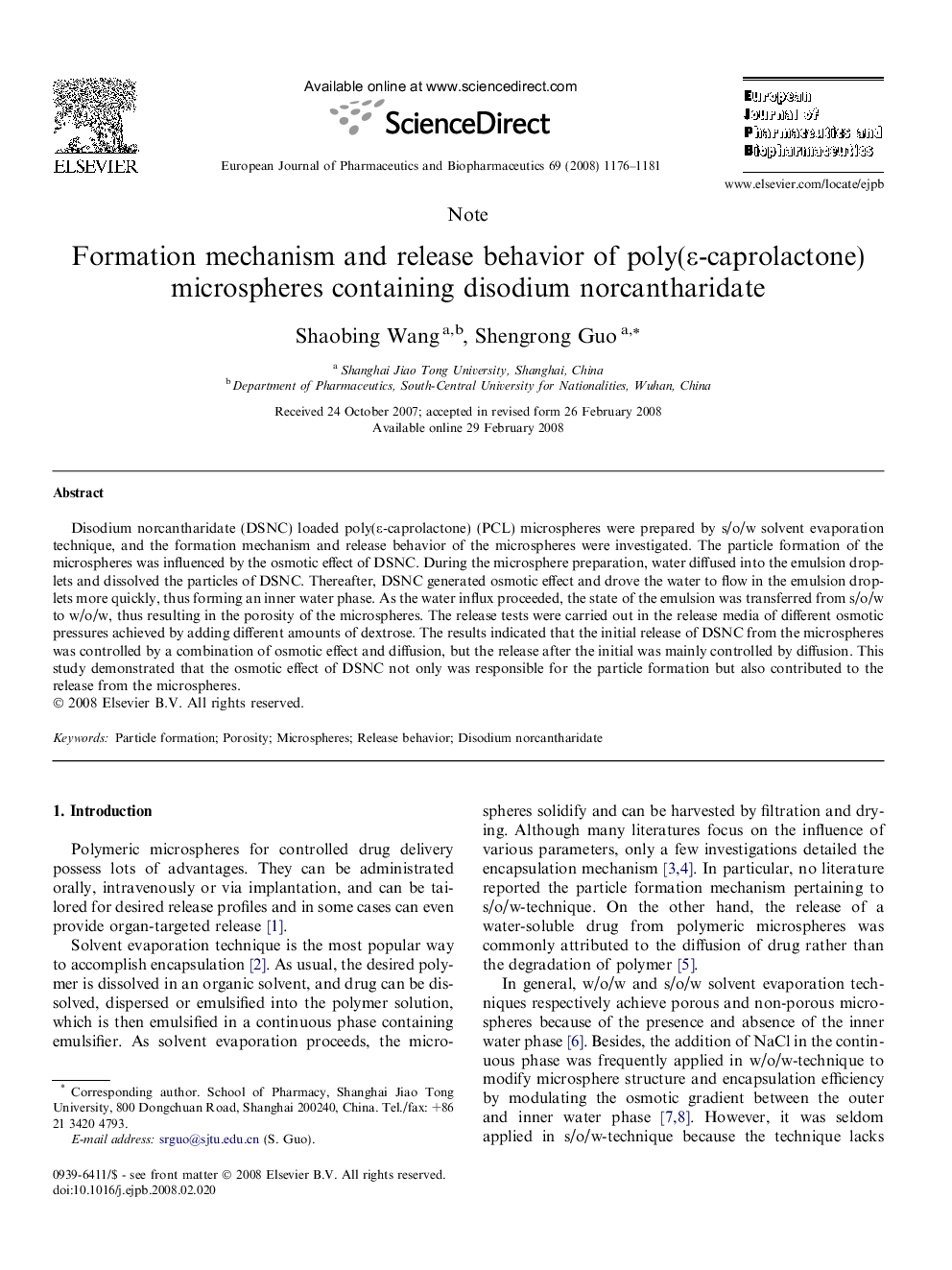| Article ID | Journal | Published Year | Pages | File Type |
|---|---|---|---|---|
| 2084632 | European Journal of Pharmaceutics and Biopharmaceutics | 2008 | 6 Pages |
Disodium norcantharidate (DSNC) loaded poly(ε-caprolactone) (PCL) microspheres were prepared by s/o/w solvent evaporation technique, and the formation mechanism and release behavior of the microspheres were investigated. The particle formation of the microspheres was influenced by the osmotic effect of DSNC. During the microsphere preparation, water diffused into the emulsion droplets and dissolved the particles of DSNC. Thereafter, DSNC generated osmotic effect and drove the water to flow in the emulsion droplets more quickly, thus forming an inner water phase. As the water influx proceeded, the state of the emulsion was transferred from s/o/w to w/o/w, thus resulting in the porosity of the microspheres. The release tests were carried out in the release media of different osmotic pressures achieved by adding different amounts of dextrose. The results indicated that the initial release of DSNC from the microspheres was controlled by a combination of osmotic effect and diffusion, but the release after the initial was mainly controlled by diffusion. This study demonstrated that the osmotic effect of DSNC not only was responsible for the particle formation but also contributed to the release from the microspheres.
